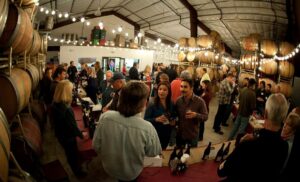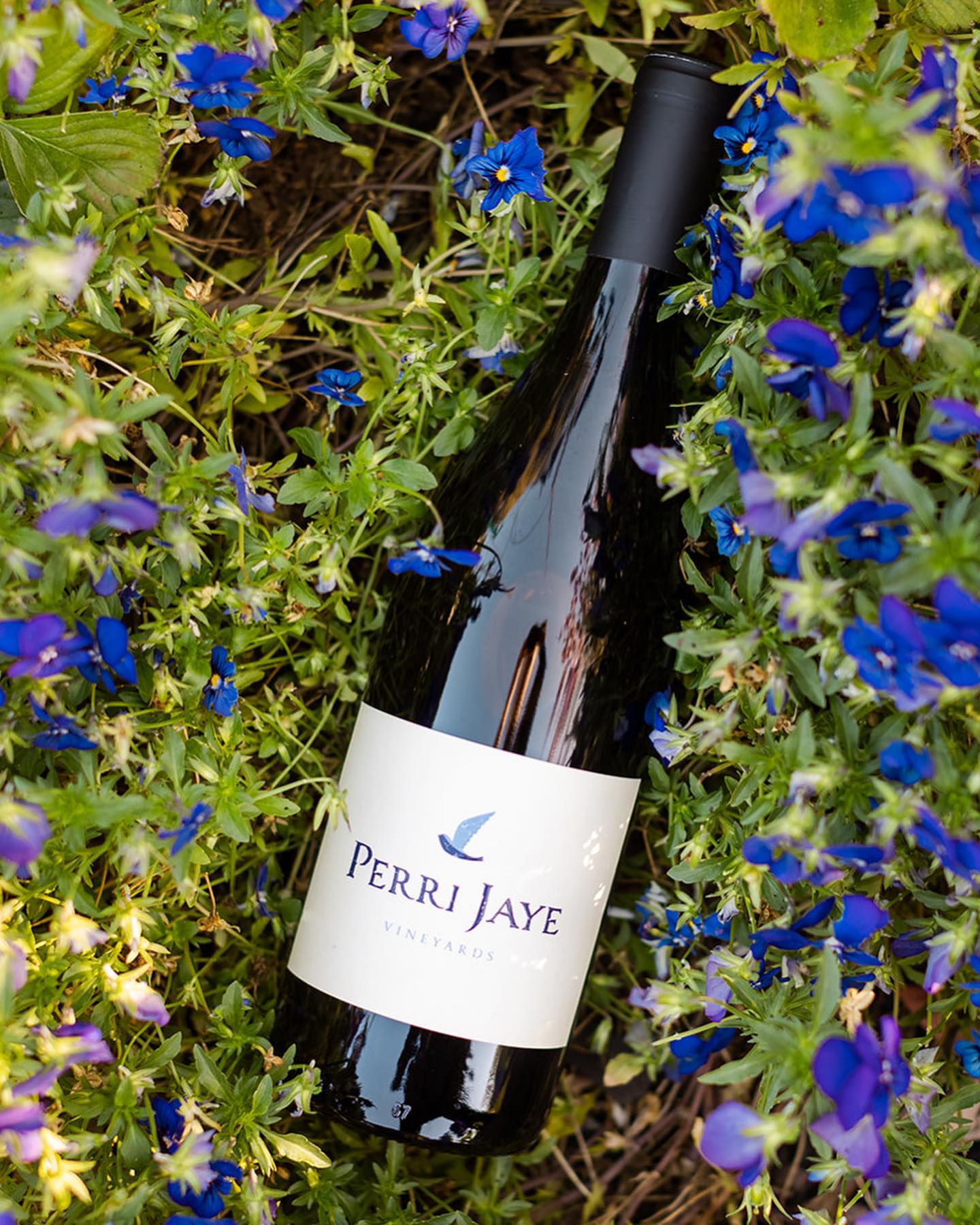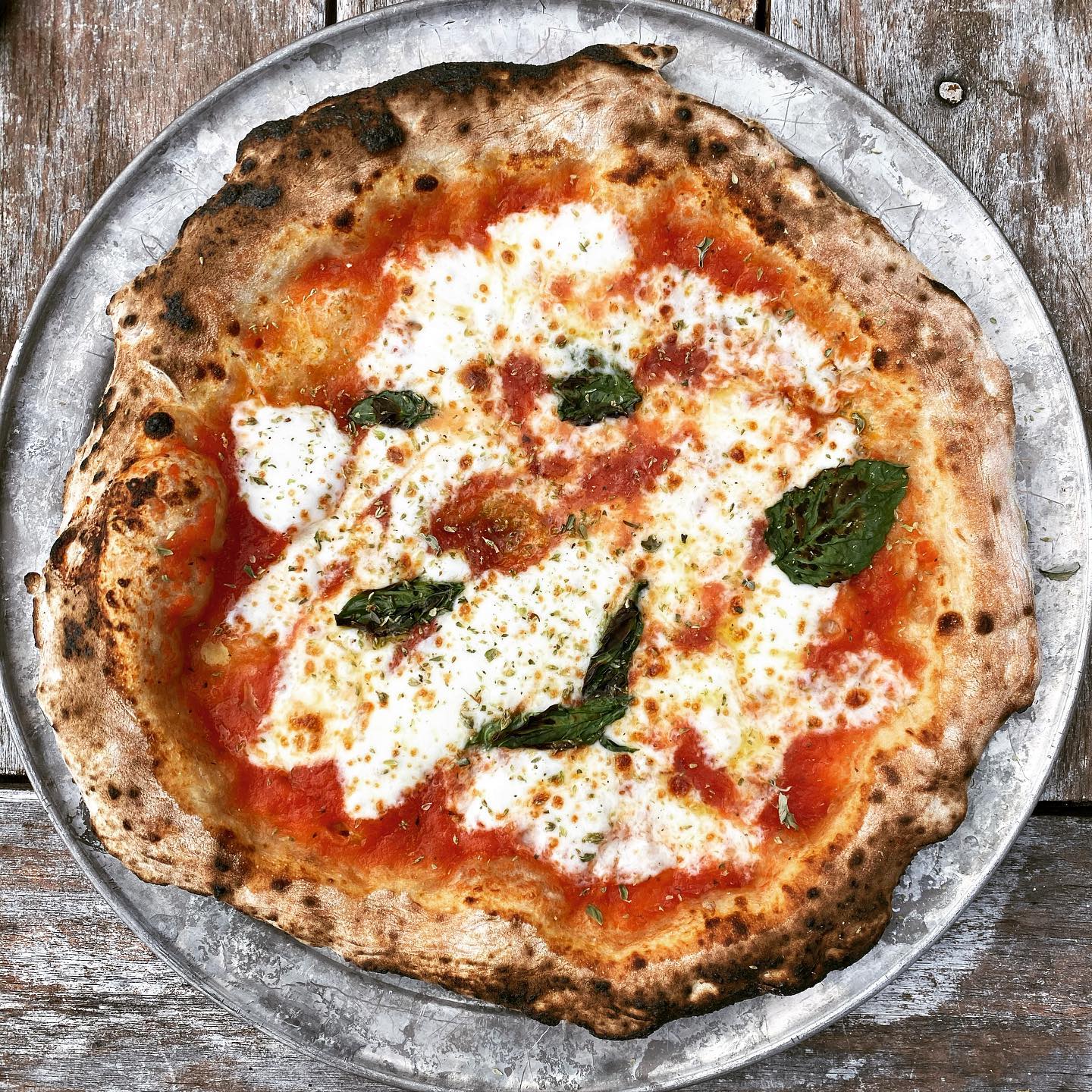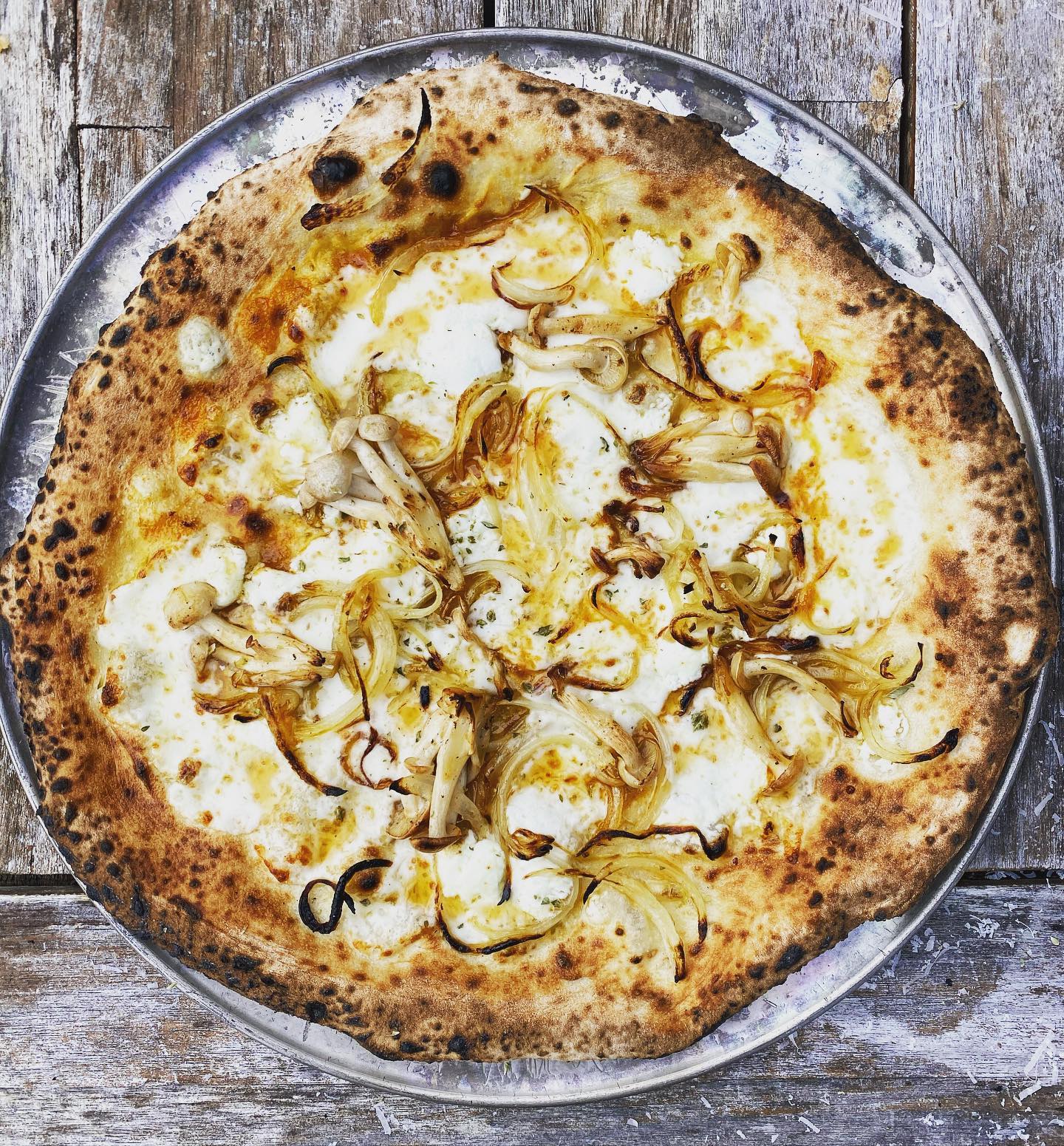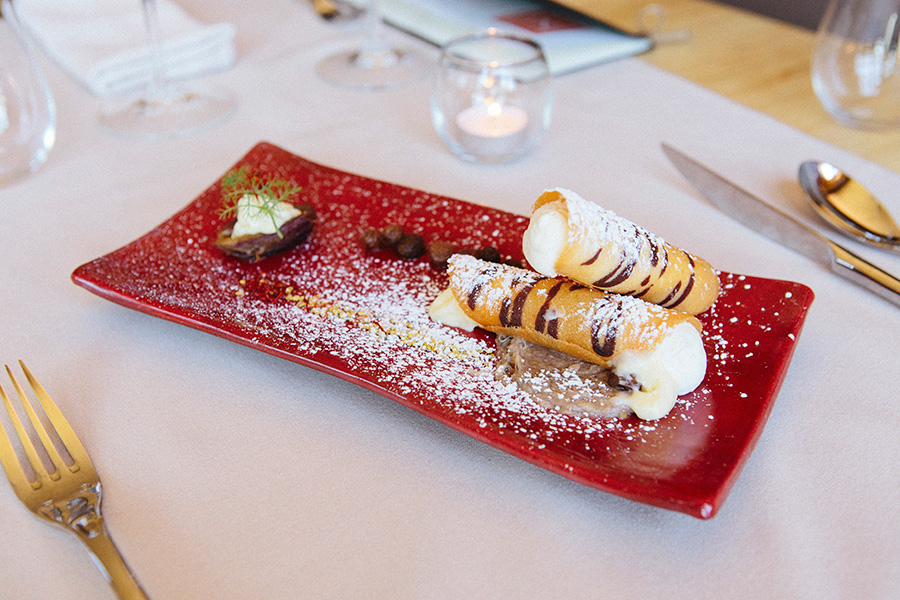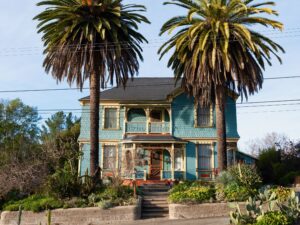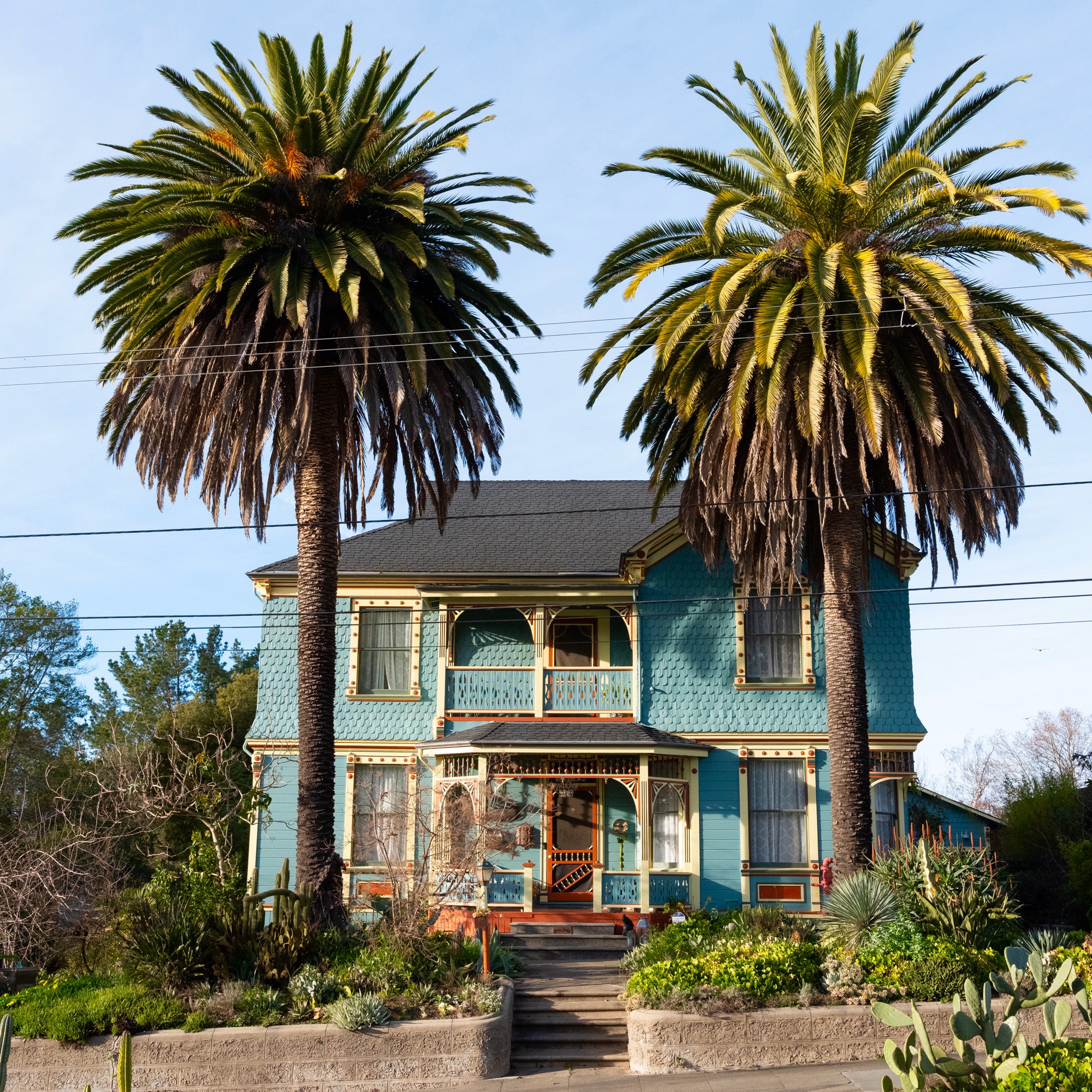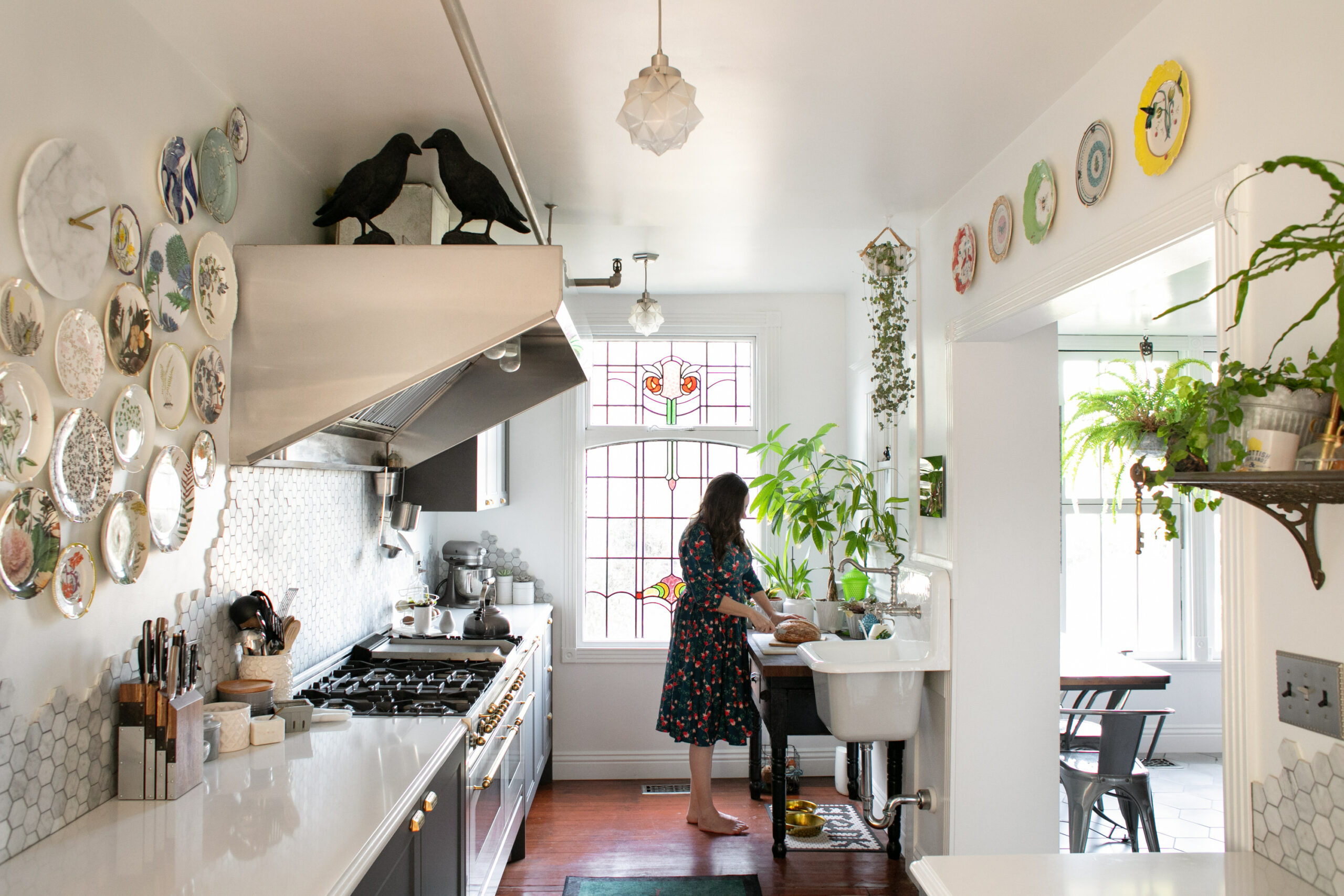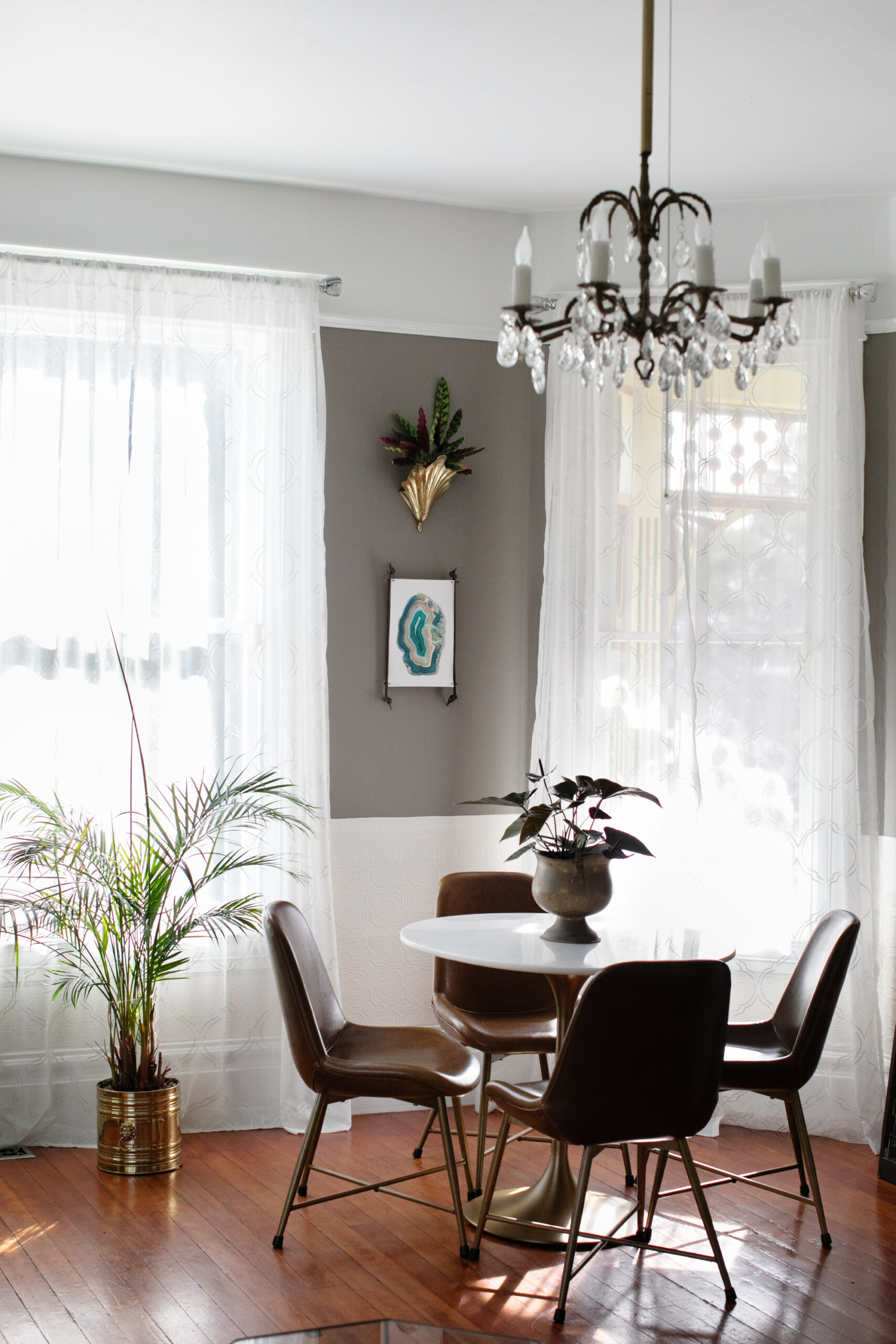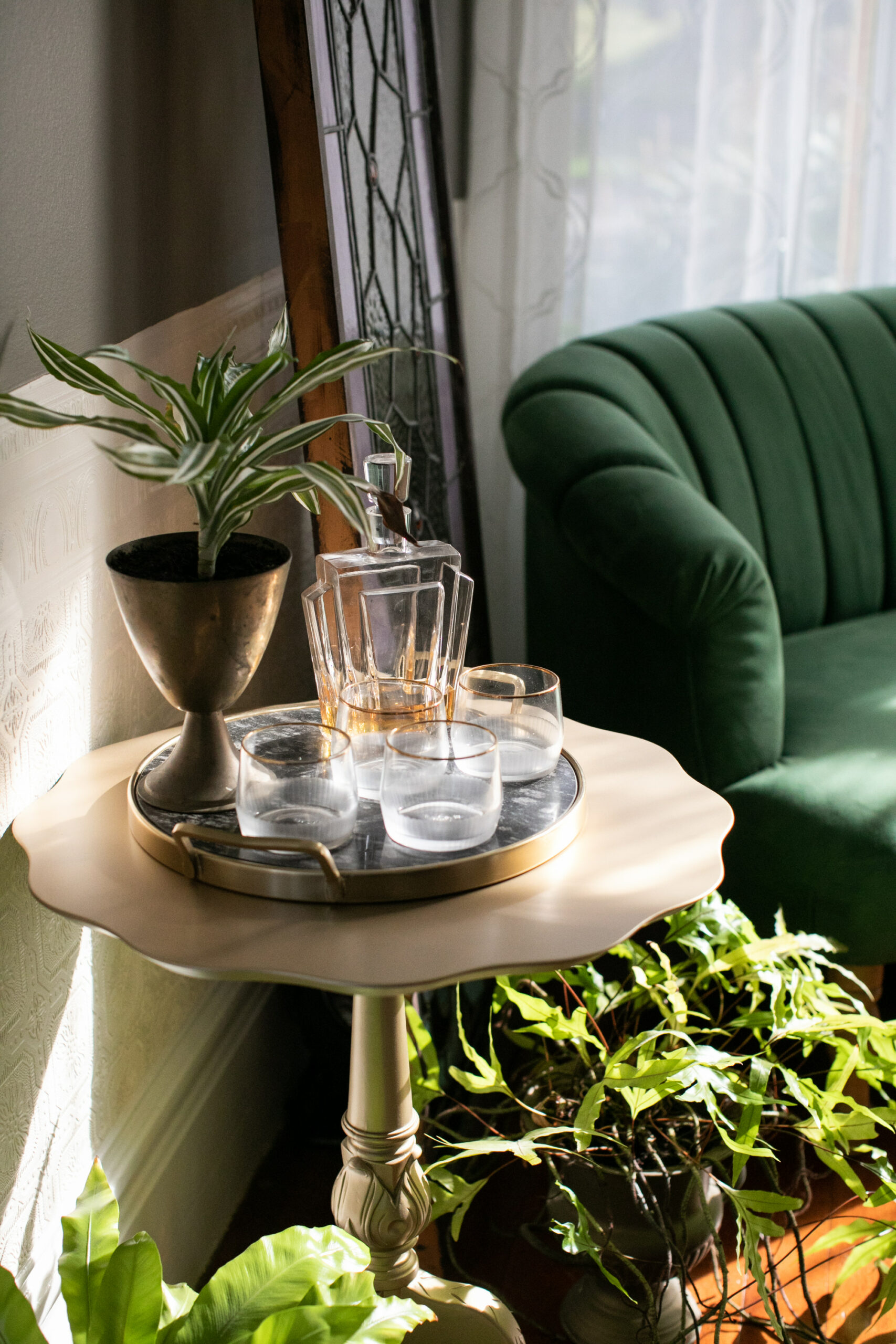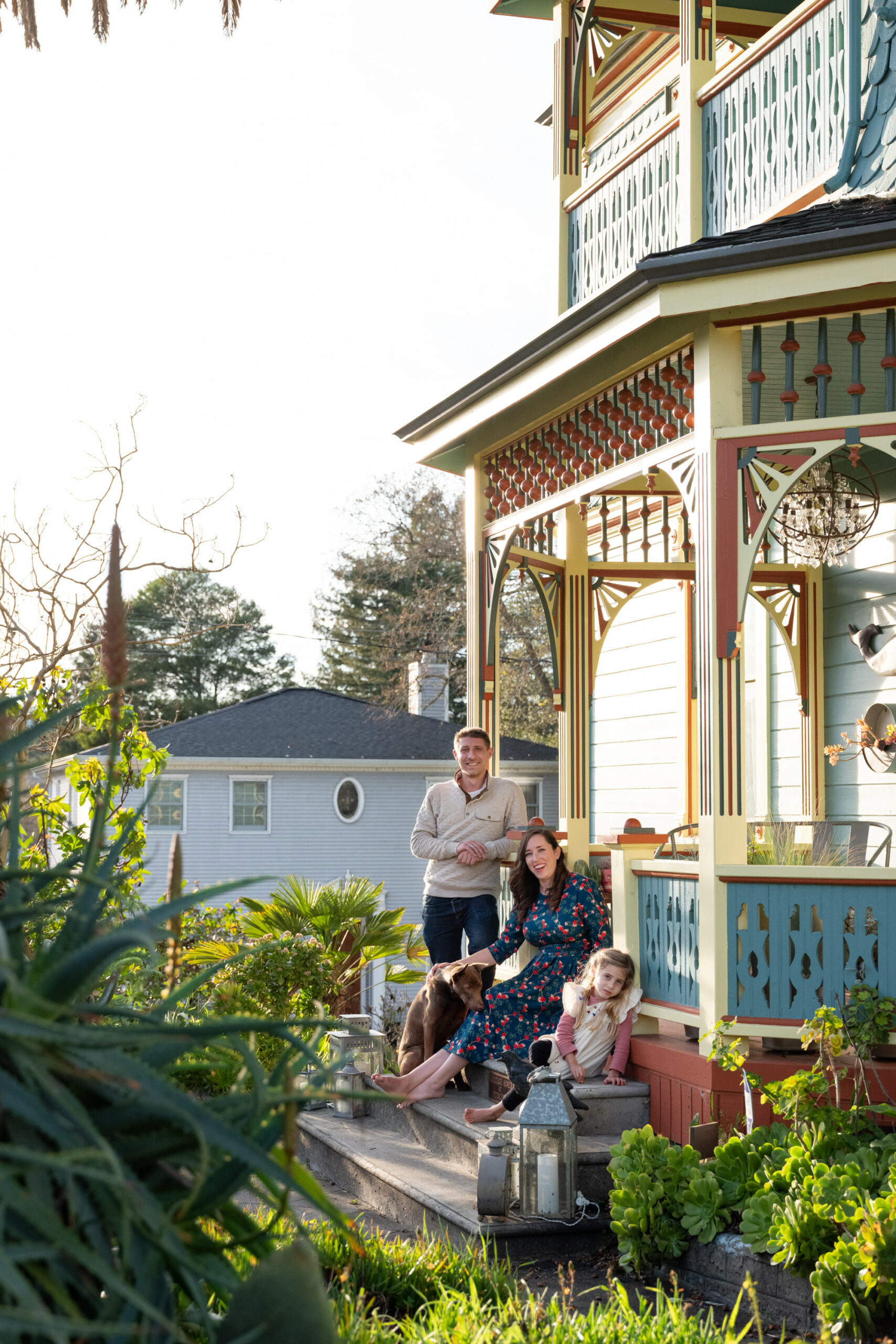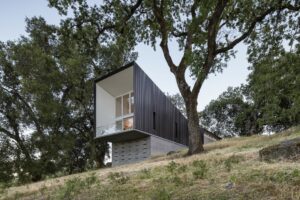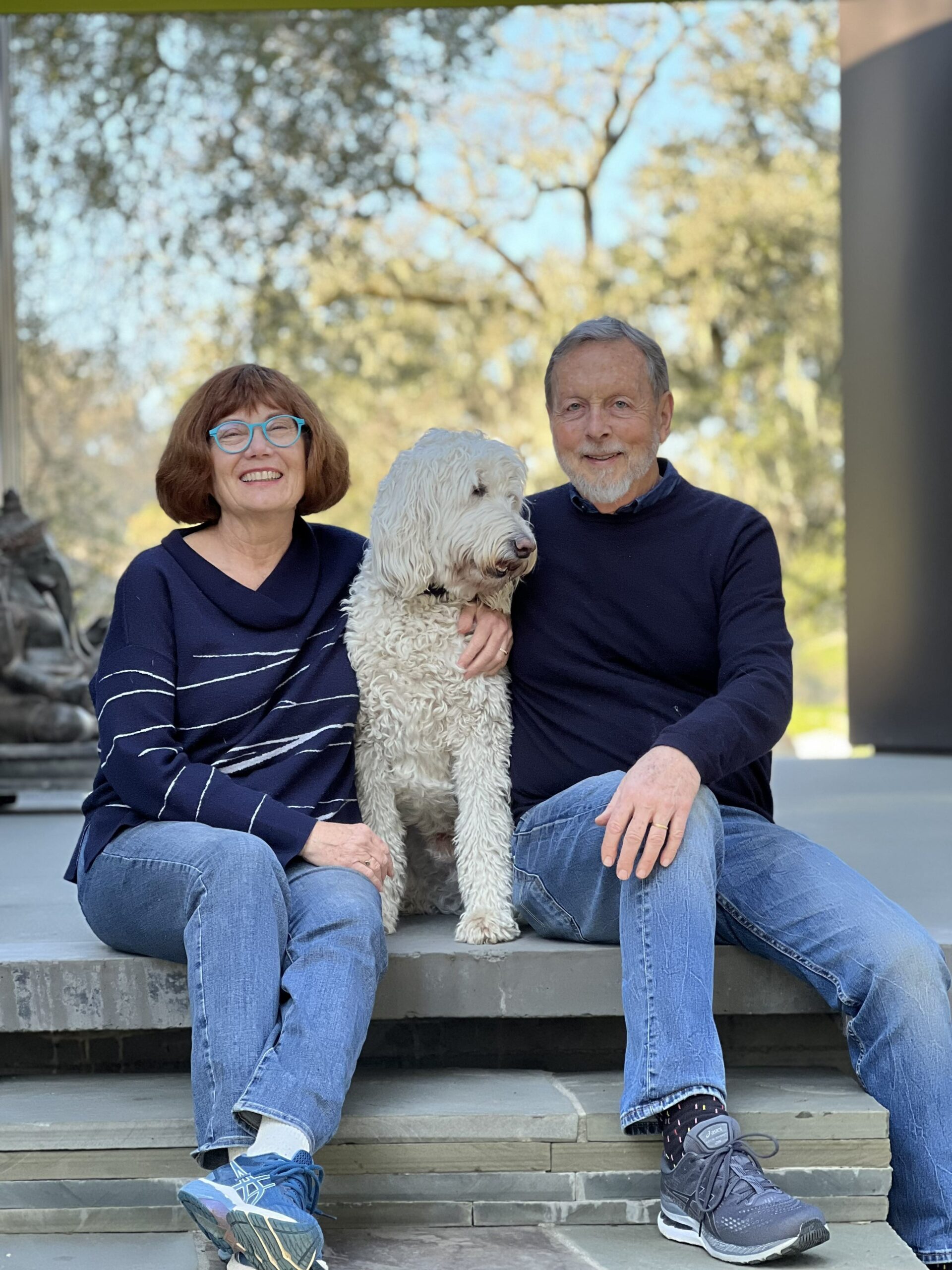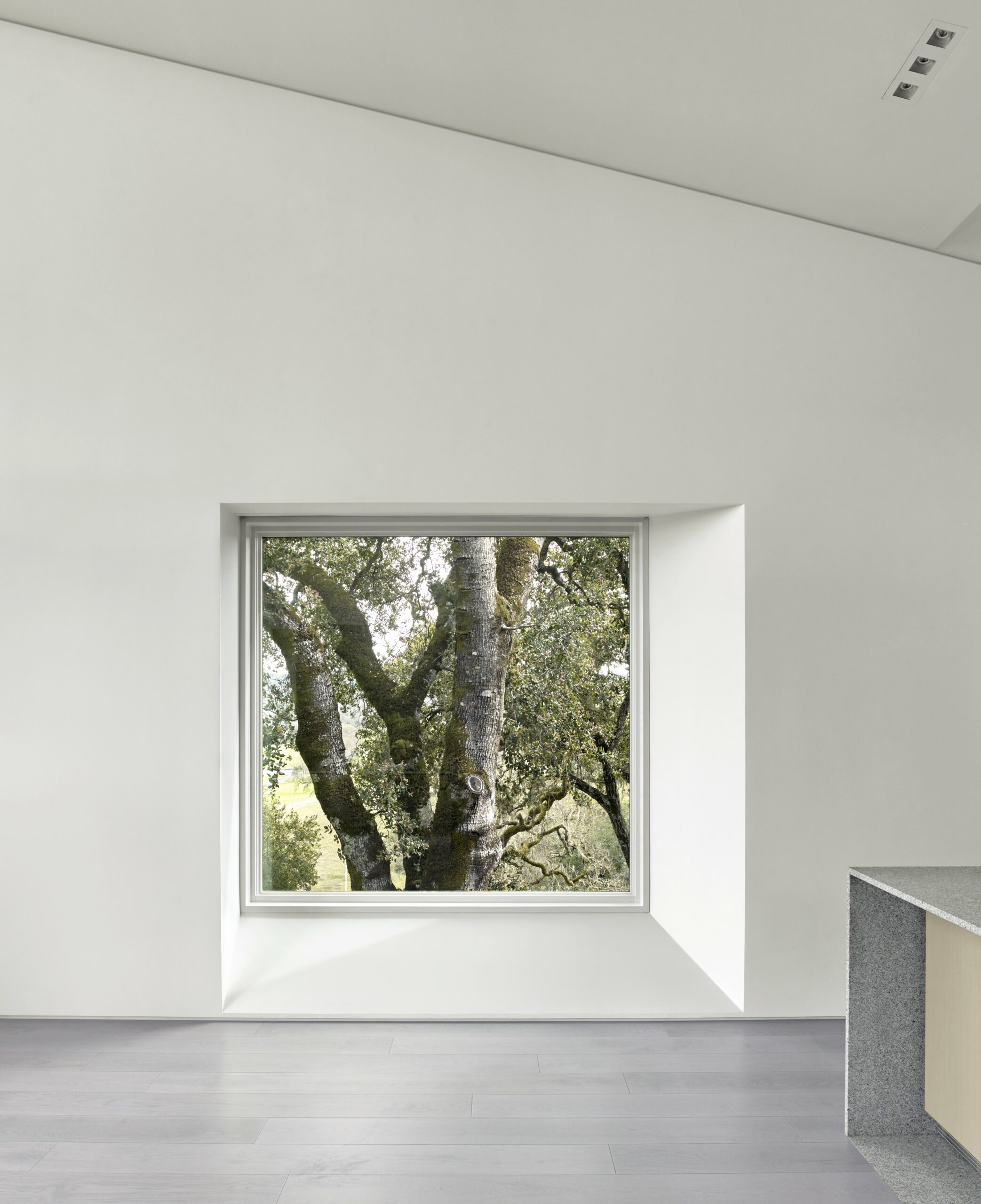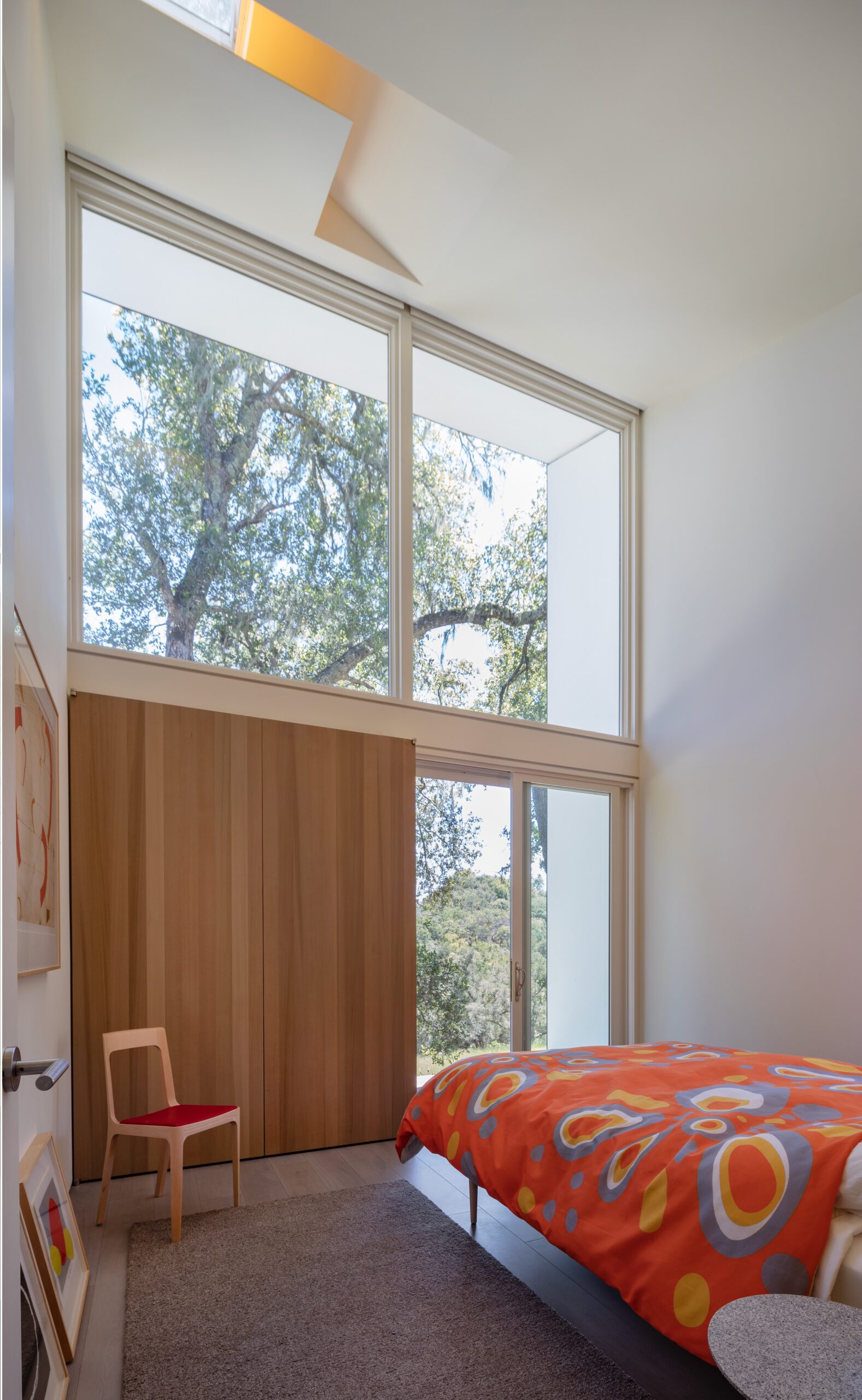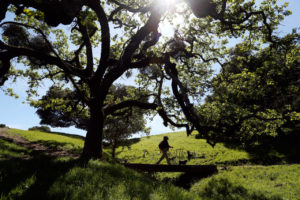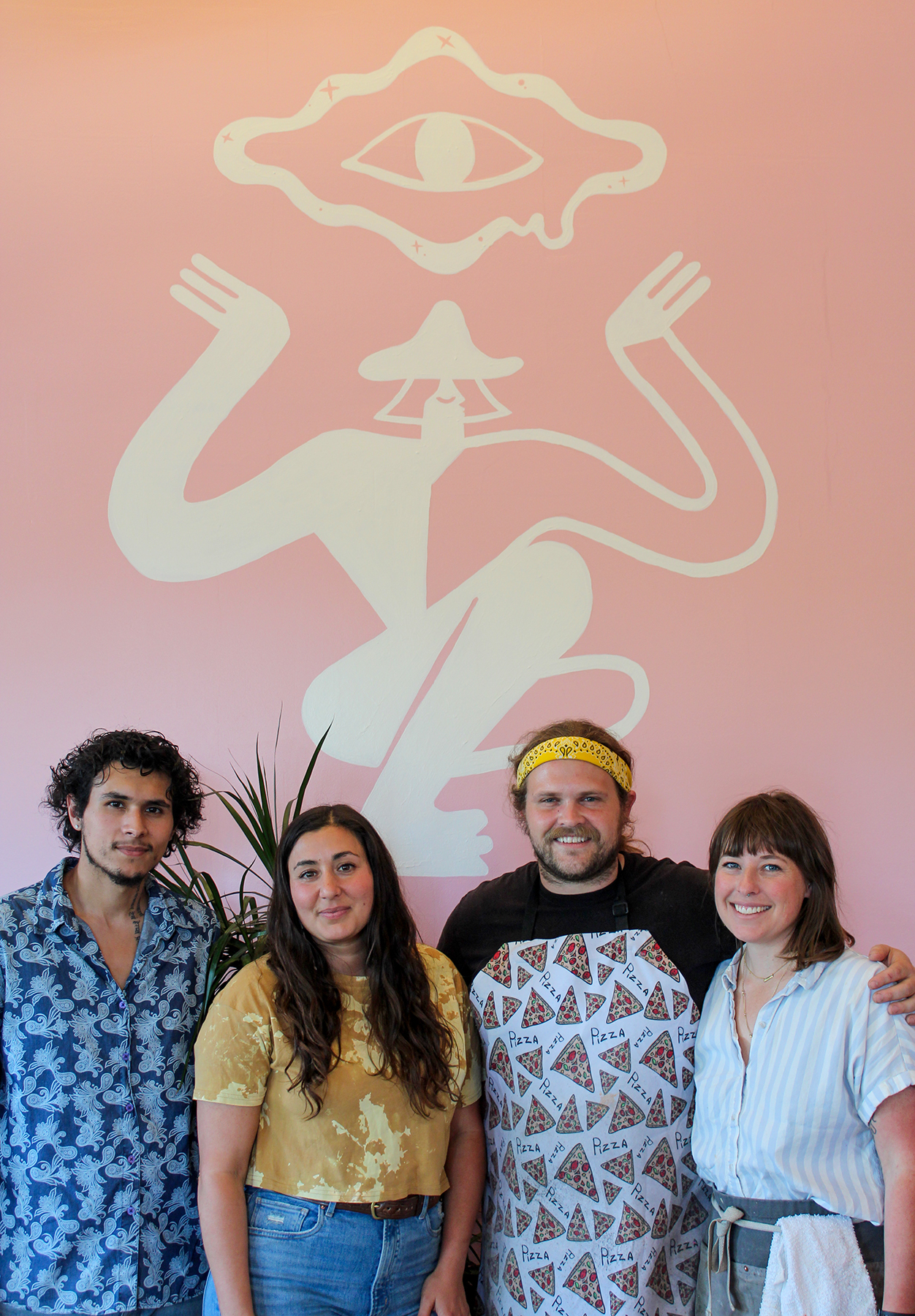Founded in 1970 to spread awareness about environmental issues, Earth Day is a great opportunity to learn about nature and local ecosystems and get involved in protecting them.
There are many ways to show your appreciation for the bountiful land in and around Sonoma County, whether it’s hiking in your favorite park, learning about local flora and fauna at a museum or volunteering your time to clean up the waterways. For those looking for learning opportunities or inspiration to get outside this Earth Day, April 22, check out these upcoming events around the county.
Want to simply appreciate the local land on a great hike this Earth Day, or any day of the year? Here are some of our favorite hikes in Sonoma County.
Want a farm-forward, plant-based meal in honor of Earth Day? Visit Healdsburg’s hotly-anticipated new restaurant Little Saint, which will open on Earth Day. Find more plant-based meals here.
Events
Earth Day Street Mural at SRJC, April 22
Santa Rosa Junior College is inviting students and community members to help create an Earth Day street mural near the campus from 9 a.m. to noon on Friday, April 22. The environmental-themed mural will run along Elliot Avenue between Salem Avenue and Albany Drive in Santa Rosa. Painting materials will be provided and there will be free coffee and pizza courtesy of the Student Government Assembly and Student Life. There will also be an open mic and music throughout the day. Learn more here.
1501 Mendocino Ave., Santa Rosa, 707-527-4011, santarosa.edu
Earth Day in the City of Sonoma, April 22
The City of Sonoma is going all out for this year’s Earth Day celebration. The city is sponsoring a nature photography contest and co-sponsoring a Green Business of the Year Award, in addition to having environmental information tables at the Friday Farmers’ Market from 9 a.m. to noon on April 22 in Depot Park. Other events and learning activities from organizations around the city are listed on the City of Sonoma website here.
Sugarloaf Wildflower Walks, April 22
As part of a “wildflower walks” series, Sugarloaf Ridge State Park will hold an event from 10 a.m. to noon on April 22 where docents take guests on a hike through grasslands and redwood forests to identify dozens of native plants. Tickets are $10, plus parking fee. Participants on this day will meet at the White Barn parking lot and hike along the Meadow-Hillside loop. Hikers should wear comfortable shoes and bring sun protection, water and snacks. Learn more and buy tickets here.
2605 Adobe Canyon Road, Kenwood, 707-833-5712, sugarloafpark.org
Earth Day Rally for Transit Justice, April 22
The Sunrise Movement of Sonoma County, North Bay Organizing Project and Sonoma County Climate Mobilization will be hosting a transit justice march from 2-4 p.m. on April 22. The march will start at the Santa Rosa Junior College campus and head to the Board of Supervisors offices to demand investment in the local transit system to support increased bus frequency, service hours and more free fare access.
1501 Mendocino Ave., Santa Rosa, 707-933-6837
Earth Day on South A Street, April 22
Ecology-focused artist Mary Vaughan will coordinate a second annual Earth Day celebration composed of art, poems and music on the evening of April 22 on South A Street in Santa Rosa. The event will begin at Cafe Frida with open mic readings from 5-6 p.m., followed by an Earth Day art stroll through galleries, studios and shops on South A Street from 6-8 p.m. Learn more about the event here.
300 South A St., Santa Rosa, 707-508-9196
Earth Day Vintage Clothing Popup, April 22-23
Healdsburg vintage store One Hundred Chapters Vintage Clothing is teaming up with the eco-friendly h2hotel for a vintage clothing popup in honor of Earth Day from 1-5 p.m. April 22-23. There will be a unique selection of beautiful garments from all eras for guests to browse and purchase. The popup will be held in the h2hotel lobby.
219 Healdsburg Ave., Healdsburg, 707-431-2202, h2hotel.com
Earth Days in Sonoma Valley with the Sonoma Ecology Center, April 22-24
The nonprofit Sonoma Ecology Center will host and sponsor a number of events throughout Earth Day weekend, April 22-24, including plant walks at Sugarloaf Ridge State Park, a star party at Robert Ferguson Observatory and volunteer opportunities at Sonoma Garden Park. Find the times and dates of these events here.
Creek Cleanups in Sonoma, April 23
There will be two Sonoma County Regional Parks-sponsored creek cleanups on April 23 for those interested in helping to remove litter and other debris from important watersheds. Creek cleanups will be held at Maxwell Farms Regional Park and Larson Park in Sonoma, both from 9 a.m. to noon. Tools, gloves, materials, snacks and drinks will be provided, though volunteers are encouraged to bring their own water and snacks. It’s also recommended that participants dress in layers and bring a hat and/or sunscreen. Participants will be required to meet in the parking lot of either park for a brief safety talk and to pick up supplies. Registration is required.
Earth Day Creek Clean Up: Maxwell Farms
To volunteer for creek cleanup at Maxwell Farms Regional Park, register here.
100 Verano Ave., Sonoma
Earth Day Creek Clean Up: Larson Park
To volunteer for creek cleanup at Larson Park, register here.
329 DeChene Ave., Sonoma
Earth Day with Laguna Stewards at Colgan Creek, April 23
The Laguna de Santa Rosa Foundation will host a community cleanup and restoration event for Earth Day from 9 a.m. to noon on April 23 at Colgan Creek in Santa Rosa. Participants will help weed, water, remove debris and nurture new native plants. The event is free to attend but registration is required. Register on EventBrite.
2920 Dutton Ave., Santa Rosa, 707-527-9277, lagunafoundation.org
Earth Day at Safari West, April 23
An Earth Day adventure awaits at our local Sonoma Serengeti as Safari West prepares fun excursions and a host of special guests from organizations that are working to conserve animal species around the world. Visitors to the Santa Rosa wildlife preserve can meet and learn about the special guests on the Safari West lawn from 10 a.m. to 3 p.m. on Saturday, April 23. Check out the list of participating organizations here.
3115 Porter Creek Road, Santa Rosa, 707-579-2551, safariwest.com
Earth Day in Downtown Santa Rosa, April 23
The city of Santa Rosa will celebrate Earth Day with eco-friendly activities and live performances from 11 a.m. to 2 p.m. Saturday, April 23, at Old Courthouse Square. Activities will highlight zero waste, green energy, water conservation and other environmentally focused themes. Santa Rosa Recreation & Parks will host games and crafts for kids, Sonoma County Bicycle Coalition will provide free valet bicycle parking and performing arts group ZunZun will provide musical entertainment. Learn more about the Earth Day celebration in Santa Rosa here.
Before the celebration, there will be a creek cleanup from 9-11 a.m. on the Greenway in Santa Rosa. Volunteers will meet at the Olive Park footbridge, near 105 Orange Street, and are encouraged to bring water, snacks and weather-appropriate clothing. Contact Kellen Johnston at 543-3947 or kjohnston@srcity.org to learn more and get involved.
Earth Day at Charles M. Schulz Museum, April 23
The Charles M. Schulz Museum will celebrate Earth Day with recycled arts and crafts from 11 a.m. to 3 p.m. on April 23. Participants can create bird feeders, bracelets, pet toys and more from recycled materials, and Native Californian basket weaver Corine Pearce will teach how her work celebrates the earth.
2301 Hardies Lane, Santa Rosa, 707-579-4452, schulzmuseum.org
Earth Day Tasting Flights at Buena Vista Winery, April 23-24
Buena Vista Winery will celebrate Earth Day with special tasting flights from 10:30 a.m. to 3:30 p.m. April 23-24. Guests can explore the vineyard while learning about the estate’s organic vineyard practices and enjoying sustainably grown wines. Bar tasting is $25, seated tasting is $35 and both tastings are free for club members. Reserve Earth Day tastings on Tock.
18000 Old Winery Road, Sonoma, 800-926-1266, buenavistawinery.com
Earth Day Trash Cleanup in Windsor, April 24
In honor of Earth Day, the Town of Windsor’s Storm Water Program team will host a community trash cleanup event from 1-3 p.m. on April 24. Volunteers will meet at the corner of Hembree and Victory lanes in Windsor to pick up litter along sidewalks, streets and creeks. Safety vests, trash pickers, gloves and bags will be provided, but participants are encouraged to wear comfortable, closed-toed shoes and sun protection. Volunteers will receive refreshments and a free T-shirt. Register for this free event on EventBrite.
Hembree Lane and Victory Lane, Windsor, 707-838-5385
Volunteer
There are a wealth of parks, preserves and environmental organizations to volunteer at in Sonoma County, with work duties ranging from trail restoration to litter and invasive plant species removal. Here’s where you can volunteer your time this upcoming Earth Day, and any other day of the year, across the county.
Daily Acts: Petaluma-based nonprofit with a holistic approach toward environmental health with a mission to inspire transformative action to create climate resilient communities. 707-789-9664, dailyacts.org/volunteer
Forest Unlimited: Forestville organization aiming to protect, enhance and restore the forests and watersheds of Sonoma County. 707-632-6070, forestunlimited.org/take-action/volunteer-for-forest-unlimited
Laguna de Santa Rosa Foundation: Santa Rosa nonprofit focused on restoring and conserving the Laguna de Santa Rosa and surrounding wetlands. 707-527-9277, lagunafoundation.org/volunteer.html
LandPaths: Santa Rosa-based organization dedicated to fostering a love of the land in Sonoma County through stewardship and outdoor experiences. 707-544-7284, landpaths.org/participate
Pepperwood Preserve: Santa Rosa biological preserve with a mission to inspire conservation and care of the earth through science. 707-591-9310, pepperwoodpreserve.org/volunteer
Russian Riverkeeper: Healdsburg-based nonprofit dedicated to protecting the Russian River. 707-433-1958, russianriverkeeper.org/volunteer
Sonoma County Agricultural Preservation and Open Space District: Ag + Open Space works to protect the county’s open spaces, agricultural lands and natural resources. 707-565-7360, sonomaopenspace.org/get-involved/volunteer-patrol
Sonoma County Conservation Action: Grassroots political organizing group working to ensure there’s environmental representation in Sonoma County government. 707-571-8566, conservationaction.org/get-involved
Sonoma County Regional Parks: More than 50 parks and beaches across the county offering camping, hiking and biking trails, bird watching, horseback riding, swimming and fishing to the public. 707-565-2041, parks.sonomacounty.ca.gov/learn/support/volunteer
Sonoma Land Trust: Santa Rosa-based nonprofit organization working to conserve scenic, natural, agricultural and open landscapes for the future generations of Sonoma County. 707-526-6930, sonomalandtrust.org/outings.
Stewards of the Coast and Redwoods: Nonprofit environmental organization working with California State Parks in the Russian River District to cultivate land stewardship, establish environmental education programs and restore local natural habitats. 707-869-9177, stewardscr.org/volunteer-opportunities
Find more local organizations and nonprofits to volunteer with or donate to on the Sonoma County Conservation Council’s directory of environmental groups.
Places to buy plants, produce and garden supplies
Celebrate Earth Day in your own backyard by planting native plants to feel one with nature and aid pollinators. There’s an abundance of farms and nurseries in Sonoma County where you can get plants and seeds, gardening supplies, boxes of sustainably sourced produce and more.
MIX Garden
1531 Healdsburg Ave., Healdsburg, 707-433-4327, mixgarden.com
Prickett’s Nursery
Locations in Healdsburg and Santa Rosa, prickettsnursery.com
King’s Nursery
1212 13th St., Santa Rosa, 707-542-4782, kingsflowernursery.com
Bennett Valley Gardens
2780 Yulupa Ave., Santa Rosa, 707-569-8624, bennettvalleygardens.com
Swede’s Feeds
9140 Sonoma Highway, Kenwood, 707-833-5050, swedesfeeds.com
Flatbed Farm
13450 Sonoma Highway 12, Glen Ellen, flatbedfarm.com
Sonoma Mission Gardens
851 Craig Ave., Sonoma, 707-938-5775, sonomamissiongardens.com
Wine Country Garden Center
21095 Broadway, Sonoma, 707-938-2727, winecountrygardencenter.com
Sonoma Valley Wholesale Nursery
19655 Arnold Dr., Sonoma, 707-732-8019, sonomavalleynursery.com
Petaluma Bounty
1500 Petaluma Blvd. South, Petaluma, 707-775-3663, petalumabounty.org
Petaluma Seed Bank
110 Petaluma Blvd. North, Petaluma, 707-773-1336, rareseeds.com/petaluma-seed-bank
Cottage Gardens of Petaluma
3995 Emerald Drive, Petaluma, 707-781-9365, cottagegardensofpet.com
Harmony Farm Supply & Nursery
Locations in Petaluma and Sebastopol, 707-823-9125, harmonyfarm.com
Check out more specialty nurseries in Sonoma County.
Beyond Sonoma County
For those wishing to explore the bountiful lands beyond Sonoma County this Earth Day, here’s where to celebrate and volunteer in neighboring counties.
Napa County
Earth Day Napa Community Cleanup
The Napa County Resource Conservation District will host a community cleanup across the county from 9-11 a.m. on Sunday, April 24. Participants should wear sturdy shoes, dress in layers and bring a full water bottle. Volunteers are also encouraged to bring their own bucket, gloves and trash grabber, though some tools and materials will be available to share. See the list of cleanup sites and register to volunteer here.
Earth Day Napa 2020 Festival
The Environmental Education Coalition of Napa County will hold its annual Earth Day celebration featuring music, dancing and dozens of environmentally focused exhibitors from 11 a.m. to 4 p.m. on Sunday, April 24, at the Oxbow Commons in Napa. All proceeds benefit the coalition’s Field Trip Bus Grant Program and the Darcy Aston Scholarship. A water bottle refilling station will be provided and the Napa Bike Coalition will host a free bike valet. Learn more here.
Mendocino County
Earth Day Celebration at Mendocino Headlands
The Mendocino Area Parks Association and the Mendocino Mermaids will host a “Park Prescription” Earth Day celebration at the Mendocino Headlands State Park from 1-4 p.m. on April 22. There will be a park clean-up, open-air paint class, dance party, face painting booth, Ayurveda talk and breathing class. Guests will meet at the Ford House Visitor Center and Museum. Learn more here.
707-937-4700, 45035 Main St., Mendocino
Earth Day at BARRA of Mendocino
Barra of Mendocino Organic Wines is celebrating Earth Day with a weekend of giveaways, wine tastings and furry friends. There will be a “Wags and Wines” fundraiser and pet adoption event with the Humane Society for Inland Mendocino County in addition to Earth Day giveaways and treats from Slam Dunk Food Truck from noon to 3 p.m. on April 23 in the tasting room.
7051 North State St., Redwood Valley, 707-485-0322, barraofmendocino.com





